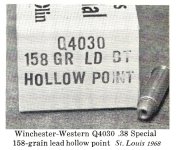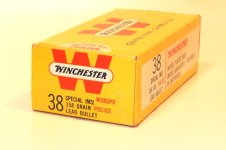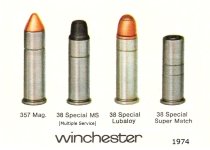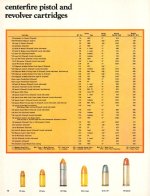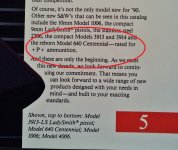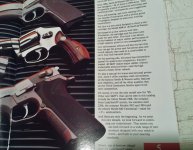[For those searching for the +P+ article, we did later document that the Federal 125 grain JHP and JSP were indeed +P+ designated cartridges for the Illinois State Police and the Michigan State Police.]
SG-688, do you recall the ballistics of these loads? I have some older boxes of the MSP JSP version, a received from a trooper friend of mine.
For those wondering why the famously 9 mm armed Illinois State Police would buy +P+ .38: Former Illinois Burea of Investigation agents kept their 2 1/2 inch Model 66 revolvers when they combined with the ISP detective section.
I've written before that I asked Federal customer service about LE stamped ammunition. The rep had no idea it existed.
==============================
March, 1979 American Rifleman Dope Bag by William C. Davis, Jr.
The Winchester 04070 load and its Federal Cartridge Corp. equivalent,
designated 38F-TD (Treasury Dept.), develop an instrumental velocity at
15 ft. of 1020 f.p.s. from a 2" barrel.
Federal also produces similar loads with 125-gr. bullets at a 15 ft instrumental velocity of 1015 f.p.s. from a 4" revolver in both hollow-point and soft-point configurations, with nonserrated jackets.
The hollow-point 125-gr. load made for the Illinois State Police has the designation 38EIL, and the 125-gr. soft-point load made for the Michigan State Police is designated 38J-MI.
These Federal loadings have double-entry headstamps with the manufacturer's symbol (FC) and the letters LE.
===============================
In a 1992 article, Federal rep Shep Kelly wrote that +P+ specification for Federal was 22,800 PSI, PSI not being interchangeable with CUP used by other manufacturers.
17,000 PSI for "normal" .38 and 18,500 PSI for +P.
 : All About The .38 Special +P and .38 Special +P+ – RevolverGuy.Com
: All About The .38 Special +P and .38 Special +P+ – RevolverGuy.Com
